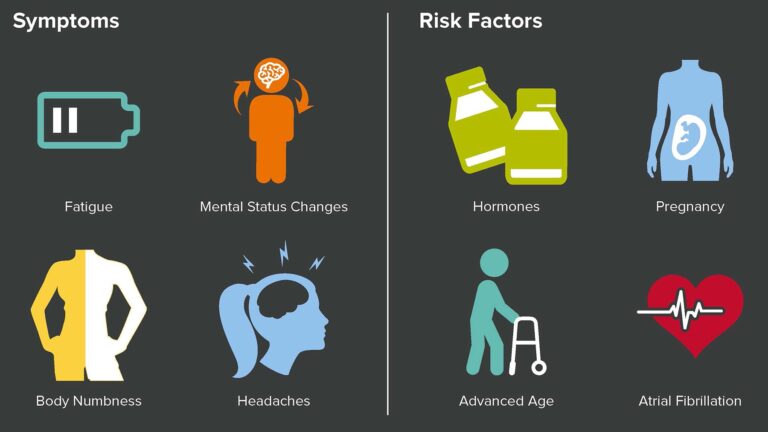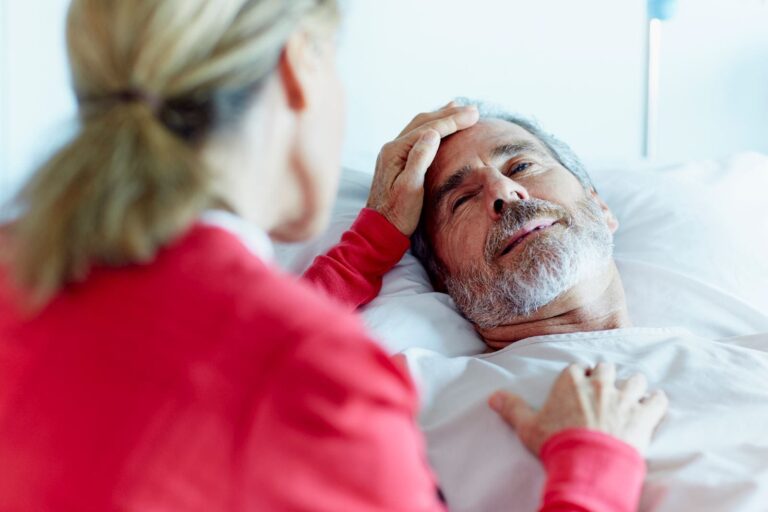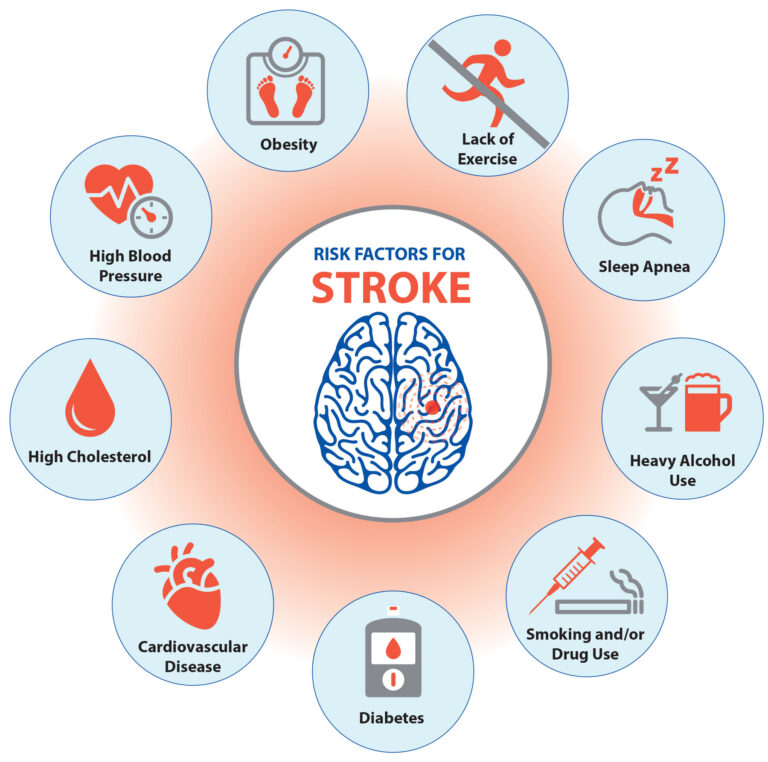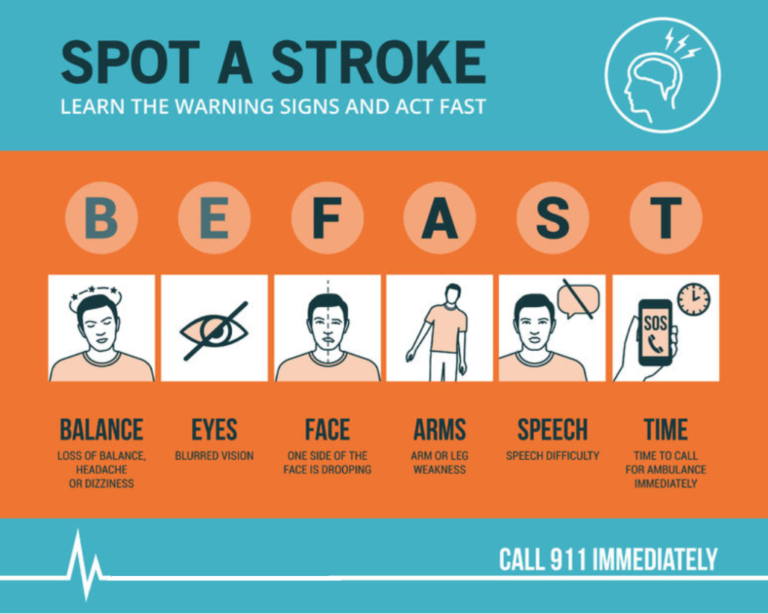The statistics indicate that Stroke is the fifth leading cause of death among Americans. Almost 800,000 individuals have a stroke every year. While older individuals are especially helpless against stroke, research recommends that they have the most unfortunate consciousness of stroke advance notice signs and chance variables.
A stroke occurs when a blood vessel in the brain ruptures and bleeds, or when there’s a blockage in the blood supply to the brain. The rupture or blockage prevents blood and oxygen from reaching the brain’s tissues.

HOW DOES STROKE HAPPEN?
Stroke can be fatal as, without oxygen, brain cells and tissue become damaged and begin to die within minutes.
A stroke happens when a blockage or drain of the veins either hinders or decreases the inventory of blood to the cerebrum. At the point when this occurs, the mind doesn’t get sufficient oxygen or supplements, and synapses begin to bite the dust.
A stroke is a cerebrovascular infection. This implies that it influences the veins that feed the mind oxygen. If the mind doesn’t get sufficient oxygen, harm might begin to happen. This is a health-related crisis. Albeit many strokes are treatable, some can prompt inability or demise.
There are three primary types of strokes:
- Transient ischemic attack (TIA): This includes a blood clot that regularly inverts all alone. This happens when the bloodstream to a piece of the cerebrum is insufficient for a concise timeframe. Typical bloodstream resumes after a short measure of time, and the side effects resolve without treatment. This is also considered as a ministroke.
- Ischemic stroke: This includes a blockage brought about by either a clot or plaque in the corridor. The indications and inconveniences of ischemic stroke can endure longer than those of a TIA or may become super durable.
- Hemorrhagic stroke: This results from either a burst or leaking of blood vessels seeping into the brain. This happens due to the rupture of blood vessels. These are typically the consequence of aneurysms or arteriovenous abnormalities.
WHAT ARE THE SYMPTOMS OF STROKE?
If your brain does not get enough blood, harms tissues inside the brain. Symptoms of a stroke can appear in the body parts that are controlled by the damaged areas of the brain.
The sooner an individual having a stroke gets care, the better their result will probably be. Hence, it’s helpful to know the indications of a stroke so you can act rapidly. Stroke indications can include:
- Paralysis
- Numbness or weakness in the arm, face, and leg, especially on one side of the body
- Trouble speaking or understanding others
- Slurred speech.
- Confusion, disorientation, or lack of responsiveness.
- Sudden behavioral changes, especially increased agitation.
- Vision problems in one or both eyes like vision blackened or blurred, or double vision.
- Trouble walking.
- Loss of balance or coordination.
- Dizziness.
- Severe, sudden headache with an unknown cause.
- Seizures.
- Nausea or vomiting.

Immediate medical attention is a life-saver once someone is getting a stroke. If you or someone around you is having a stroke, call 911 or local emergency services right away. Prompt treatment is key to preventing the complications, such as:
- Brain damage
- Long-term disability
- Death
It’s smarter to be excessively mindful while managing a stroke, so make sure to get crisis clinical assistance assuming you think you perceive the indications of a stroke.
WHAT ARE THE RISK FACTORS AND HOW TO PREVENT THEM FROM CAUSING STROKE?
Various risk factors make you more susceptible to stroke, including:
- Diet: An unbalanced diet can increase the risk of stroke, this may include:
- Salt
- Saturated fats
- Trans-fats
- Cholesterol
- Inactivity
- Inactivity, or lack of exercise, can also raise the risk of stroke.
Eating a balanced diet containing fruits, vegetables, whole grains, nuts, seeds, and legumes with moderate exercise helps reduce the risk of stroke. This would also help control weight.
- Heavy alcohol use: The risk of stroke likewise increments with heavy liquor use. Assuming that you drink, drink with some restraint. This implies something like one beverage daily for ladies and something like two beverages every day for men. Weighty liquor use can raise blood pressure levels. It can likewise raise fatty substance levels, which can cause atherosclerosis. This is plaque development in the corridors that river blood vessels. Reducing alcohol usage would help in avoiding a stroke.
- Tobacco use: Involving tobacco in any structure additionally raises the risk of stroke since it can harm the blood vessels and heart. Nicotine additionally raises blood pressure. Quitting smoking will help you prevent stroke as well as other ailments.

Apart from the above risk factors, there are various personal factors that might increase your risk of getting stroke such as:
- Family history: You are at high risk of getting a stroke due to genetic health factors, such as high blood pressure.
- Sex – Both women and men can have strokes. Although strokes are more common in women than in men in all age groups.
- Age – The older you are, the more likely you are to have a stroke.
- Race and ethnicity – African Americans, Alaska Natives, and American Indians are more likely to have a stroke than other racial groups.
- Health history: Some of the medical conditions are linked to stroke risk, such as:
- A previous stroke
- High blood pressure
- High cholesterol
- Carrying too much excess weight
- Heart disorders, such as coronary artery disease
- Heart valve defects
- Enlarged heart chambers
- Irregular heartbeats
- Sickle cell disease
- Diabetes
- Blood clotting disorder
- Patent foramen ovale (PFO)
HOW TO PREVENT A SECOND STROKE?
Almost more than 7,000,000 Americans are stroke survivors. For those individuals, the risk of having another stroke is higher than an individual who has never had one. Although you can’t handle a few variables, similar to maturity, orientation, and hereditary qualities, you can make the way of life changes to assist with forestalling a subsequent stroke. See your primary care physician consistently to assist with dealing with your blood pressure, find ways to quit smoking, and get in shape on the off chance that you are overweight or large. It is important to learn ways to become more physically active and improve your diet. This would help you lower your risk of stroke as well as your overall health.

OUTLOOK
Almost 75% of strokes are linked with high blood pressure or hypertension. Various risk factors such as sedentary lifestyle, obesity, poor diet, and smoking lead to stroke. The risk of stroke is almost 4 times higher among smokers. Ischemic stroke risk is higher among people on birth control or receiving hormone replacement therapy. It is advised to talk to your doctor if you have high blood pressure or any of these risk factors. Prevention is the key to controlling stroke.
If you or anyone you know is suffering from stroke, our expert providers at Specialty Care Clinics will take care of your health and help you recover.
Call us on (469) 545-9983 to book an appointment with our specialists.
